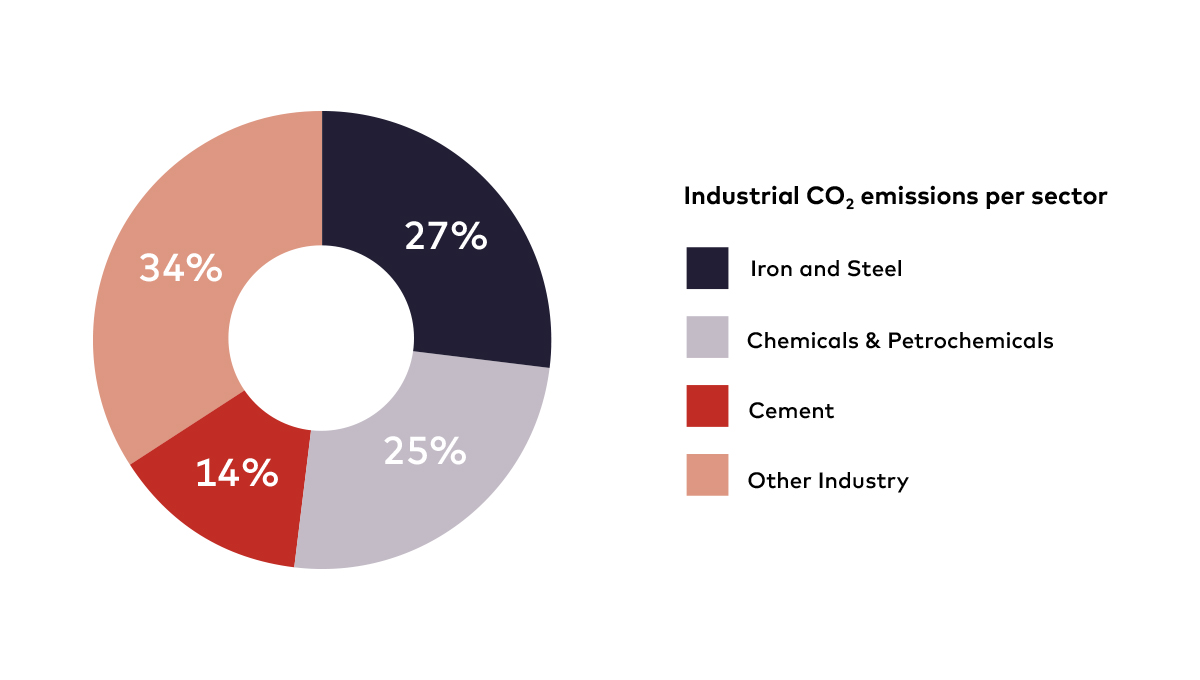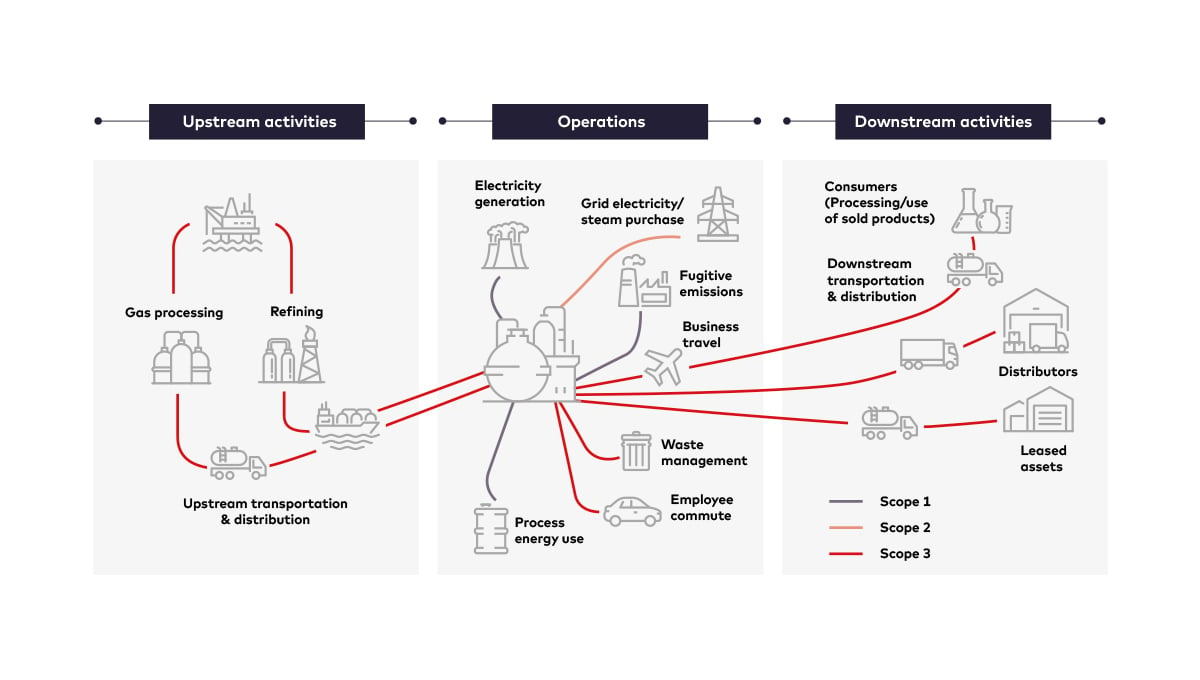How can the chemicals industry in the Gulf Cooperation Council rise to the net zero challenge?
This article contains summarised information from a white paper, “Net zero opportunities for the Chemicals industry”, by dss⁺ and the Gulf Petrochemicals and Chemicals Association (GPCA). The full report can be found here.

The chemicals industry has a crucial role in the global transition to a low carbon economy. Given that most industrial and consumer products, and industrial processes rely on chemicals, the sector has become an essential enabler for the global decarbonisation journey.
However, the Paris Agreement and the global alignment to a 1.5°C temperature scenario stand in stark contrast to the chemical industry’s current 4°C temperature increase trajectory. Globally, chemical production should reduce its emissions significantly to align with a 1.5°C scenario.
The impetus to rise to this challenge is already starting to take root in the GCC: many countries have introduced measures to promote renewable energy, green investment and circular economy initiatives, alongside research and development projects in carbon capture, utilisation and storage (CCUS) projects.
Whilst a net zero future will bring with it new consumer preferences and a policy environment that requires extensive changes to operating models, it could signal a huge opportunity for the chemicals sector, particularly in the GCC, where sharing, investment and collaboration could yield successful result. If the sector starts to fastidiously engage in the decarbonisation project, it can turn these risks into opportunities.
Chemicals sector emissions contributions – globally and in the GCC
Globally, the chemicals industry contributes to about 95% of manufactured products and with growing economies and populations, will need to double by 2050 to keep up with demand. The sector is also one of the largest contributors to global greenhouse gas emissions, accounting for 30% of total industrial energy use, 14% of total industrial CO2 emissions, and producing the third largest industry direct CO2 emissions.
| 3rd | 4°C | >98% | (only) 17% |
|---|---|---|---|
| Largest source of emissions in the industrial sector | The warming trajectory alignment if the chemicals industry continues with the current emissions trajectory | Of carbon feedstock in the industry comes from fossil fuel sources | Of chemical companies have a science-based emissions reduction target |

Green shoots promoting net zero for the chemicals industry in the GCC
Whilst one might feel overwhelmed by the task ahead for the industry, there are several trends that signal a positive environment for decarbonisation in the chemicals industry in the GCC. These trends are starting lay the foundation for more investment, research, and a stronger environment for collaboration. The four main trends that we’ve identified are outlined below, along with a recommendation for the chemicals sector.
- Renewable energy investment
Rising sentiments toward renewable energy as a lever for decarbonisation is clear: the UAE and Saudi Arabia have made significant commitments and investments into clean energy sources, and In the first half of 2021, approximately USD 2.8 billion of renewable energy project contracts were signed in the region.
The falling costs and increased investment into renewable energy in the region presents a great opportunity for the chemicals sector. Investing in renewables and subsidiary industries will help the sector graduate toward more sustainable electricity sources and even create new income streams.
- Carbon Capture, Utilisation and Storage (CCUS) prospects
CCUS has the potential to cut down emissions by 38% by 2060. Such a technology could prove invaluable for high-emissions industries, and several Research and Development (R&D) projects have already started taking shape in the region.
For the chemicals industry, CCUS will likely become an important lever to decarbonisation and a tool to diversifying its income streams. Investing in research and development in this area could yield positive results.
- The growth of blue and green hydrogen
Investments in blue and green hydrogen are growing rapidly, and the GCC is aiming to become one of its largest producers: the UAE, Kuwait and Oman have national hydrogen strategies and pilot projects, whilst Saudi Arabia is aiming to generate 4 MT per annum by 2035.
The chemicals industry could capitalise on this growth by using hydrogen for industrial heating or as a low-carbon feedstock – reducing both emissions and operating costs.
- The incentive toward circular thinking
Research in circular economy, which promotes waste reduction and circular design, is growing. Countries like Saudi Arabia and the UAE are already investing heavily into waste management and recycling.
Adopting a mindset that utilises waste from other industries and embracing circular economy principles can provide the chemicals industry with a host of benefits, such as lower-carbon products, synthetic fuels, and alternative feedstocks. The sector stands to benefit from incorporating such models into its operations.
How can chemicals organisations start their decarbonisation journey?
There is a need to set the chemicals industry on a better trajectory than its current pathway. Alignment with the global Paris Agreement 1.5°C warming scenario will take immense effort from the industry.
Whilst there is no singular solution or approach for addressing net zero, there are 5 foundational steps to initiate a low carbon transition, which we believe set organisations on a trajectory for a better future.
1. Understanding your GHG emissions sources (including scope 3)
Understanding relevant GHG emissions in both operations and the value chain is imperative. Identifying emissions hotspots within the GHG picture can help to address short-term priorities and longer-term goals.

2. Setting science-based targets
Of the 119 chemicals companies that have committed to SBTs that are approved by the Science-based Targets Initiative (SBTi) globally, only 32 have targets that are aligned with a 1.5°C scenario, and no companies in the GCC region have publicly committed to an SBT. Understanding emission reduction potential and committing to a science-based target will ensure that a company is aligned with the global 1.5°C target and that climate risks are mitigated.
3. Developing a net zero roadmap.
A comprehensive net zero roadmap will help to identify decarbonisation levers and carbon offset measures for the short, medium and long term. It will facilitate the prioritisation of decarbonisation tasks, from low hanging fruits to initiatives that will require more time and investment, which will in turn help a gradual and feasible net zero transition.
4. Developing a net zero finance mobilisation plan
Preparing to finance the net zero transition is essential to actualise decarbonisation targets. Identifying budget scenarios for the short, medium and long term, and planning for additional financial requirements, should be considered, alongside different financing avenues that can actualise net zero targets.
5. Assessing your inhouse capabilities and planning for change.
Even if the four steps above are implemented flawlessly, they will not achieve the desired results without skilled personnel, capability development and change management. Assessing internal capabilities and plugging skills and knowledge gaps is essential to turning a net zero target into a reality.
Conclusion
The chemicals industry in the GCC has already started to recognise that an ambitious effort is required to address climate change. Whilst some changes have already started to take place, and the foundations to enable change are starting to emerge, a scale-up is needed if the sector is to achieve a Paris-aligned goal.
But there is reason for optimism – if the industry is to address net zero directly, commit to science-based targets and facilitate collaboration with both internal and external stakeholders, it can start to pivot towards new ways of working that realise new opportunities that diversify income, mitigate risks, and pioneer change. The sector needs to commit to net zero, together.